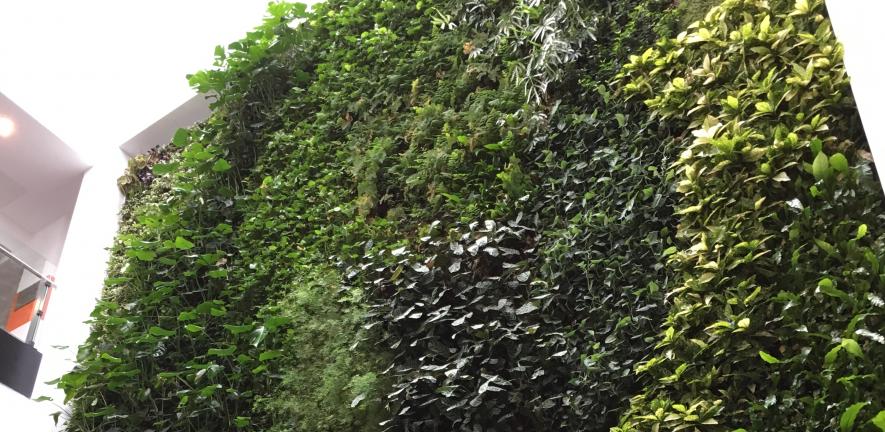
Submitted by Grainne Kennedy on Thu, 2017-05-25 16:01
Clean air is on the agenda a lot these days but it is almost always in relation to the air outdoors. Given that people often spend up to 90% of their time indoors, surely we should also consider the impact of pollutants indoors. Ventilating a building well will improve air quality but can sometimes result in heat loss which increases the building’s carbon emissions. So what’s the solution?
Well, one option is to turn to the natural world and use plants to help clean our air. The David Attenborough Building on the New Museum site has used this method to dramatic effect with their 13 meter high green wall. The 8,376 plants contained in the wall release oxygen into the building throughout the workday and many are natural filters, removing pollutants from the air. The wall’s impact goes beyond its air-cleaning abilities as it keeps the building cool in the summer through evapotranspiration and it insulates the space in the winter months. The health of the plants, the water content of the soil and their mineral requirements are all monitored using sensors and are reported back to the wall installers who use this information to maintain the wall.
The wall is also an opportunity to tell a story. The building is home to the Cambridge Conservation Initiative - a collaboration between the University and a number of internationally focused conservation organisations, and the plants on the wall come from the 11 regions that these organisations work in.
The wonderful thing about these plants is that we can all use them to clean our air, just follow the advice of NASA and incorporate these plants into your living space for fresh, clean air.
